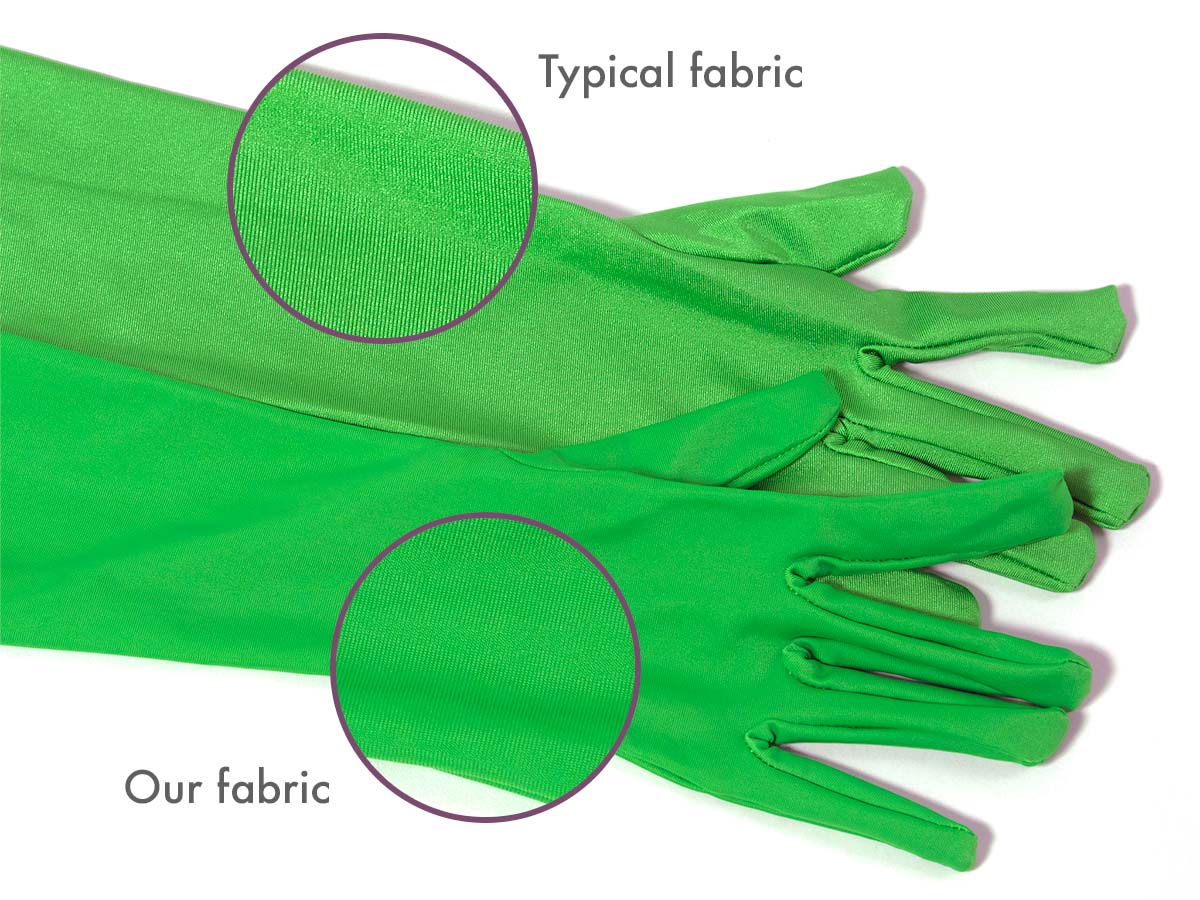A Beginner's Guide to Green Screen Suits
Share
Unleashing the Magic of Chroma Key Suits
If you've ever watched a movie or a television show with stunning visual effects, chances are you've witnessed the power of a green screen suit. These extraordinary garments, also known as chroma key suits, greenman suits or VFX suits, play a pivotal role in creating scenes where the boundaries of reality are pushed to the limit.
In this multipart guide, we're delving into the world of chroma keying, covering first some common questions regarding green screen suits, such as how they work, what they're made of, what to wear under them and more. So, grab some popcorn and let's dive in!
How Do Green Screen Suits Work?
Green screen suits are a fundamental tool in the realm of visual effects, enabling filmmakers to seamlessly superimpose subjects onto different backgrounds. The process, known as chroma keying, involves replacing the green color of the suit with a different image or video—or removing it entirely, making the wearer invisible. This is accomplished by using specialized software during post-production, which identifies the green color and removes it or replaces it with the desired background.
By wearing a green screen suit, actors and performers essentially transform into a blank canvas, allowing the magic of visual effects to take center stage. It opens up a world of possibilities, where ordinary individuals can become superheroes, creatures from other planets, or even vanish into thin air—all with the help of a simple garment.
What Are Green Screen Suits Made Of? What is the Best Fabric to Use?
To achieve the desired effect, green screen suits are crafted from a specific type of fabric. The material used is often a stretchable and lightweight blend, ensuring a comfortable fit for the wearer while also allowing for freedom of movement. These suits are designed to fit close to the body so they are wrinkle-free and smooth, minimizing any unwanted creases or shadows that could interfere with the chroma keying process.
The fabric itself is carefully selected to have a vibrant and consistent green hue, which is essential for successful keying. While different manufacturers may have their own proprietary fabric blends, most green screen suits are made from a combination of polyester and spandex. This combination provides the necessary flexibility, durability, and color saturation required for optimal performance.

Sync’s green fabric is a 85% polyester / 15% spandex blend, custom-dyed to be compatible with industry-leading green screen paint and background manufacturers. Our fabric is also low-sheen, helping it respond to light very evenly, ensuring that the green remains consistent under different lighting conditions. These are two factors that distinguish our green screen suits from others.
What Do You Wear Under a Green Screen Suit?
What you wear under a chroma key suit can vary based on individual comfort and the specific needs of the scene being filmed. The primary rule is to avoid clothing that may cause the suit to bulge or that could be visible under the suit.
It’s common for talent to wear skin-tight clothing, like athletic compression garments. These help smooth out the shape of the body under the suit and minimize the appearance of wrinkles or creases that could make the keying process more challenging. Stick to neutral colors like black or gray—or possibly skin-colored—so they won't interfere with the chroma keying process. Avoid anything with logos or patterns, as they could potentially show through!
It's also crucial to consider comfort. Filming can often involve long hours, so wearing comfortable underwear and ensuring the fit of the green screen suit is paramount. For those looking to prevent perspiration during extended shoots, wearing moisture-wicking clothing underneath the suit can be beneficial. These garments are designed to wick away moisture from the body, keeping you cool and dry, even under hot studio lights.
When Wearing a Green Screen Suit, Can You See Out?
While the primary purpose of a green screen suit is to provide a uniform chroma keying surface, it's natural to wonder if the wearer can see through the fabric.
The answer is, it depends.
Most low-cost green screen suits use the same material across the entire garment—the face area included. Because the fabric is generally opaque, this presents challenges to the wearer’s ability to see out. At best, if in a bright, well-lit environment, or outdoors during the daytime, one should be able to make out general objects and walk around without tripping. But if it’s dark, seeing anything can be a challenge.
Some green screen manufacturers, Sync included, utilize a matching mesh fabric over the face area of the suit. This greatly improves visibility (and breathability) for the wearer. Since the mesh isn’t fully opaque, there is a tradeoff of losing some color integrity of the chroma key suit. This is because skin tones and facial features such as the eyes, nose and mouth become slightly more visible.
The mesh used in Sync’s chroma key clothing is unmatched in minimizing color bleed-through, though, so it’s not much of an issue for our customers.
You can see how much of a difference ours makes in this screen shot from a Happy Kelli Instagram video:
We’ll let you guess which one is our suit 🙂
Exploring the Possibilities of Green Screen Suits
As we conclude our part 1 of this guide, we hope you've gained a deeper understanding of these remarkable garments and their integral role in creating captivating visual effects. From turning ordinary individuals into extraordinary characters to transporting us to fantastical worlds, chroma key suits truly unlock the limitless potential of imagination.
If you're ready to explore the possibilities of green screen suits for yourself, be sure to check out our collection of green screen clothes, including our versatile green screen suit with removable hood and gloves, economical, single piece green screen body suit, and our specially designed kids green screen suit.
Start your journey into the realm of VFX and unleash your creativity today!
And stay tuned for the next installment of our green screen series, where we'll dive into tips and tricks for achieving seamless chroma key effects. Until then, happy chroma keying!

